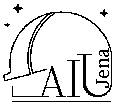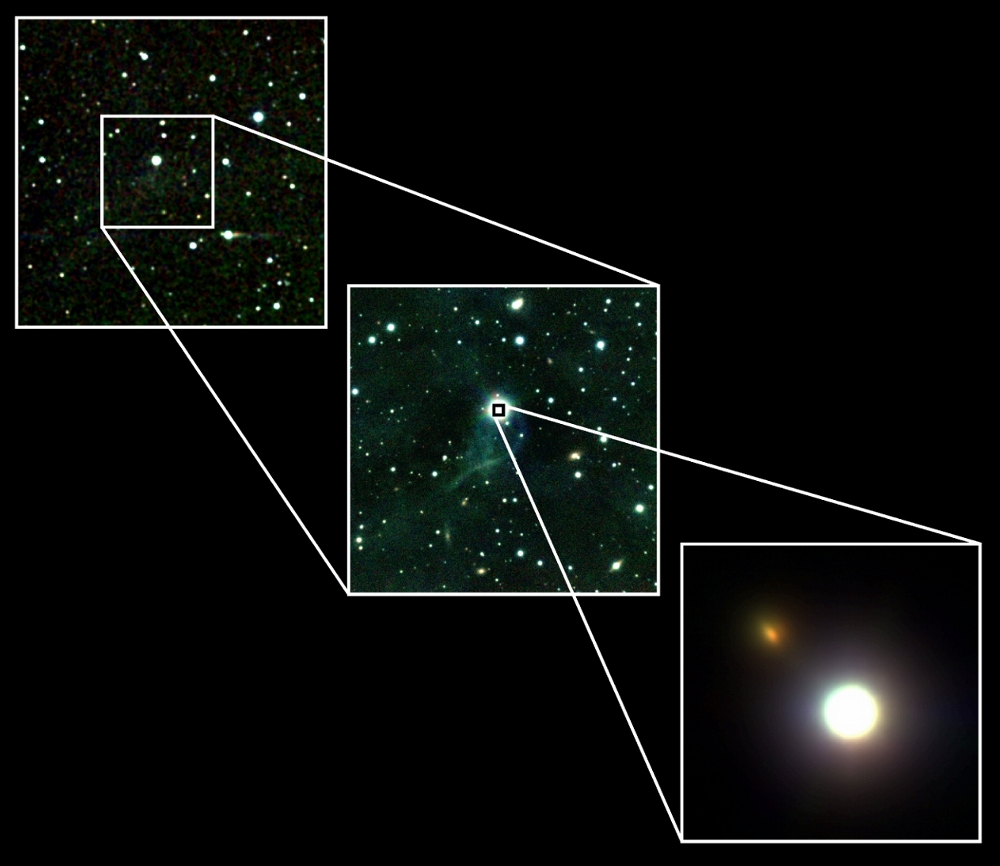 |
ASTROPHYSIKALISCHES
INSTITUT
und
UNIVERSITÄTS-STERNWARTE
|
 |
|
|
|
 |
top left:
2MASS JHK-band color composite image
with classical T Tauri star [MR81] H-alpha 17
in Corona Australis (2 Myrs, 130 pc) in the center
(North up, East left). |
middle:
ESO VLT/ISAAC JHK-band color composite image of
immediate area around [MR81] H-alpha 17
showing the strong outflow leaving the star
towards the south. |
bottom right:
ESO VLT/NACO JHK-band color composite of a small
area just with [MR81] H-alpha 17, which is a
binary star with components NE (top left) and
SW (bottom right). The light from the fainter,
but more massive NE component (early M type)
is mostly absorbed by a small dark lane just
barely visible (direction NE to SW), so that
we see only reflected light from that star.
The dark lane is an edge-on circumstellar disk,
in which possibly planets can form right now. |
| Back to AIU home page |
| Last modified: |
J. Weiprecht |
|
14.05.2009 |
| |